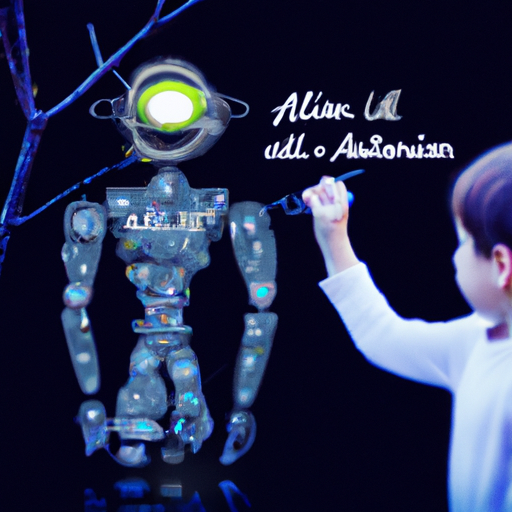
AI in Education: How Technology is Transforming Learning
-
Table of Contents
“Unlock the Potential of AI in Education: Discover the Power of Technology-Enhanced Learning!”
Introduction
The use of Artificial Intelligence (AI) in education is transforming the way we learn. AI is being used to create personalized learning experiences, automate administrative tasks, and provide real-time feedback to students. AI-powered technologies are being used to create virtual classrooms, provide personalized learning experiences, and even grade student work. AI is also being used to create adaptive learning systems that can adjust to the individual needs of each student. AI is revolutionizing the way we learn, and it is only going to become more prevalent in the future.
Analyzing the Use of AI in Adaptive Learning Environments
The use of artificial intelligence (AI) in adaptive learning environments is becoming increasingly popular in the educational sector. AI-based adaptive learning systems are designed to provide personalized learning experiences for students, allowing them to learn at their own pace and in their own way. This type of learning environment has the potential to revolutionize the way students learn, as it can provide tailored instruction and feedback to each individual student.
AI-based adaptive learning systems use data from a variety of sources to create a personalized learning experience for each student. This data includes information about the student’s academic performance, interests, and preferences. The AI then uses this data to create a personalized learning plan for the student, which can be adjusted as the student progresses.
The use of AI in adaptive learning environments has several advantages. First, it allows for more personalized instruction, as the AI can tailor the learning experience to the individual student’s needs. Second, it can provide real-time feedback to the student, allowing them to adjust their learning plan as needed. Finally, AI-based adaptive learning systems can provide a more engaging learning experience, as they can incorporate multimedia elements such as videos and interactive activities.
However, there are also some potential drawbacks to using AI in adaptive learning environments. For example, AI-based systems can be expensive to implement and maintain, and they may require significant technical expertise to operate. Additionally, AI-based systems may not be able to accurately assess a student’s progress, as they may not be able to accurately interpret the data they are given. Finally, AI-based systems may not be able to provide the same level of personalized instruction as a human teacher.
Overall, the use of AI in adaptive learning environments has the potential to revolutionize the way students learn. However, it is important to consider the potential drawbacks of using AI-based systems before implementing them in an educational setting.
Investigating the Potential of AI-Based Tutoring Systems
The potential of artificial intelligence (AI)-based tutoring systems is an area of increasing interest in the field of education. AI-based tutoring systems are computer programs that use AI to provide personalized instruction to students. These systems are designed to provide individualized instruction that is tailored to the student’s needs and abilities.
AI-based tutoring systems have the potential to revolutionize the way students learn. By providing personalized instruction, these systems can help students learn more effectively and efficiently. AI-based tutoring systems can also provide feedback to students in real-time, allowing them to adjust their learning strategies as needed. Additionally, AI-based tutoring systems can be used to supplement traditional instruction, allowing students to receive additional support and guidance.
The potential of AI-based tutoring systems is vast. These systems can be used to provide personalized instruction to students of all ages and abilities. AI-based tutoring systems can also be used to provide instruction in a variety of subjects, including math, science, language, and history. Additionally, AI-based tutoring systems can be used to provide instruction in a variety of formats, including text, audio, and video.
Despite the potential of AI-based tutoring systems, there are still many challenges that must be addressed before these systems can be widely adopted. For example, AI-based tutoring systems must be able to accurately assess a student’s abilities and provide appropriate instruction. Additionally, AI-based tutoring systems must be able to adapt to a student’s changing needs and abilities. Finally, AI-based tutoring systems must be able to provide instruction in a way that is engaging and motivating for students.
In conclusion, AI-based tutoring systems have the potential to revolutionize the way students learn. By providing personalized instruction, these systems can help students learn more effectively and efficiently. However, there are still many challenges that must be addressed before these systems can be widely adopted. As research in this area continues, it is likely that AI-based tutoring systems will become increasingly common in the field of education.
Assessing the Role of AI in Personalized Learning
The use of artificial intelligence (AI) in personalized learning has become increasingly popular in recent years. AI-driven personalized learning is a form of education that uses AI to tailor instruction to the individual needs of each student. This type of learning has the potential to revolutionize the way students learn, as it can provide a more personalized and engaging learning experience.
AI-driven personalized learning is based on the idea that each student has unique learning needs and preferences. AI can be used to analyze data about a student’s learning style, interests, and abilities in order to create a personalized learning plan. This plan can then be used to provide tailored instruction that is tailored to the individual student’s needs.
AI-driven personalized learning can also be used to provide feedback to students in real-time. AI can be used to analyze data about a student’s performance and provide feedback that is tailored to the individual student’s needs. This feedback can help students understand their strengths and weaknesses and can help them adjust their learning strategies accordingly.
AI-driven personalized learning can also be used to provide personalized recommendations for students. AI can be used to analyze data about a student’s interests and abilities and provide recommendations for courses, books, and other resources that may be of interest to the student. This can help students find resources that are more likely to be of interest to them and can help them stay engaged in their learning.
Overall, AI-driven personalized learning has the potential to revolutionize the way students learn. By providing tailored instruction and feedback, as well as personalized recommendations, AI-driven personalized learning can help students learn more effectively and efficiently. As AI technology continues to improve, it is likely that AI-driven personalized learning will become even more popular in the future.
Examining the Impact of AI on Student Engagement
The impact of artificial intelligence (AI) on student engagement is an increasingly important topic in the field of education. AI has the potential to revolutionize the way students learn, interact, and engage with their educational materials. As AI technology continues to evolve, it is becoming increasingly important to understand the implications of AI on student engagement.
AI can be used to personalize learning experiences for students. AI-driven systems can analyze data from a student’s past performance and use it to create personalized learning experiences tailored to the individual student’s needs. This can help students stay engaged and motivated to learn. AI can also be used to create interactive learning experiences that can help students stay engaged and motivated. AI-driven systems can create virtual simulations and games that can help students learn in a more engaging way.
AI can also be used to provide feedback to students in real-time. AI-driven systems can analyze student performance and provide feedback that can help students understand their mistakes and improve their performance. This can help students stay engaged and motivated to learn.
AI can also be used to create personalized learning paths for students. AI-driven systems can analyze data from a student’s past performance and use it to create personalized learning paths tailored to the individual student’s needs. This can help students stay engaged and motivated to learn.
Finally, AI can be used to create virtual tutors that can help students stay engaged and motivated to learn. AI-driven systems can create virtual tutors that can provide personalized feedback and guidance to students. This can help students stay engaged and motivated to learn.
In conclusion, AI has the potential to revolutionize the way students learn, interact, and engage with their educational materials. AI-driven systems can create personalized learning experiences, provide feedback in real-time, create personalized learning paths, and create virtual tutors that can help students stay engaged and motivated to learn. As AI technology continues to evolve, it is becoming increasingly important to understand the implications of AI on student engagement.
Exploring the Benefits of AI-Powered Learning Platforms
The use of artificial intelligence (AI) in learning platforms is becoming increasingly popular in the education sector. AI-powered learning platforms offer a range of benefits that can help to improve the learning experience for students and educators alike. This article will explore the advantages of AI-powered learning platforms and how they can be used to enhance the educational experience.
One of the primary benefits of AI-powered learning platforms is the ability to personalize the learning experience for each student. AI-powered platforms can analyze a student’s performance and provide tailored content and feedback to help them progress. This can help to ensure that each student is receiving the most appropriate material for their level of understanding and can help to reduce the amount of time spent on topics that are already understood.
Another advantage of AI-powered learning platforms is the ability to provide real-time feedback. AI-powered platforms can provide instant feedback on student performance, allowing students to quickly identify areas of improvement and take corrective action. This can help to reduce the amount of time spent on topics that are already understood and can help to ensure that students are receiving the most appropriate material for their level of understanding.
Finally, AI-powered learning platforms can also provide a more engaging learning experience. AI-powered platforms can use natural language processing to provide interactive content that is tailored to the student’s interests and level of understanding. This can help to make the learning process more enjoyable and can help to keep students engaged and motivated.
In conclusion, AI-powered learning platforms offer a range of benefits that can help to improve the learning experience for students and educators alike. By providing personalized content, real-time feedback, and an engaging learning experience, AI-powered platforms can help to ensure that students are receiving the most appropriate material for their level of understanding and can help to reduce the amount of time spent on topics that are already understood.
Conclusion
AI in Education is transforming the way we learn and interact with educational materials. AI-powered tools are providing students with personalized learning experiences, allowing them to learn at their own pace and in their own way. AI is also helping teachers to better understand their students and provide more effective instruction. AI is also helping to reduce the cost of education by automating certain tasks and providing more efficient ways of delivering content. AI is revolutionizing the way we learn and is likely to continue to do so in the future.








